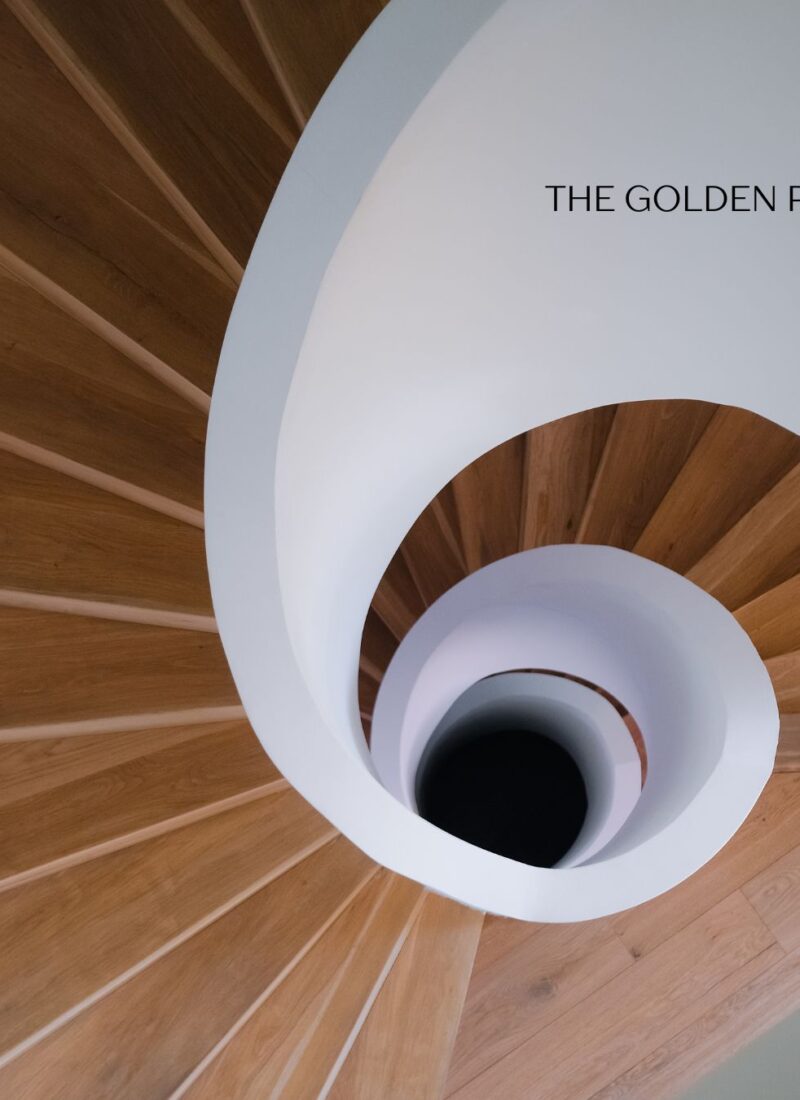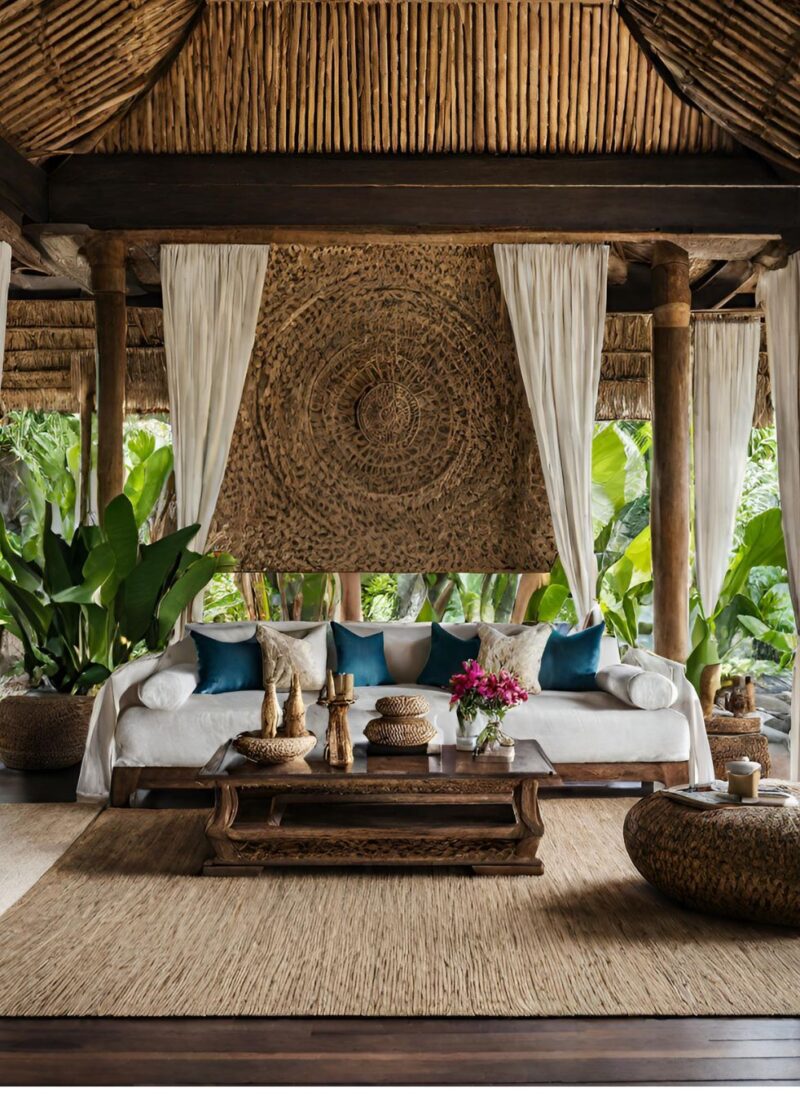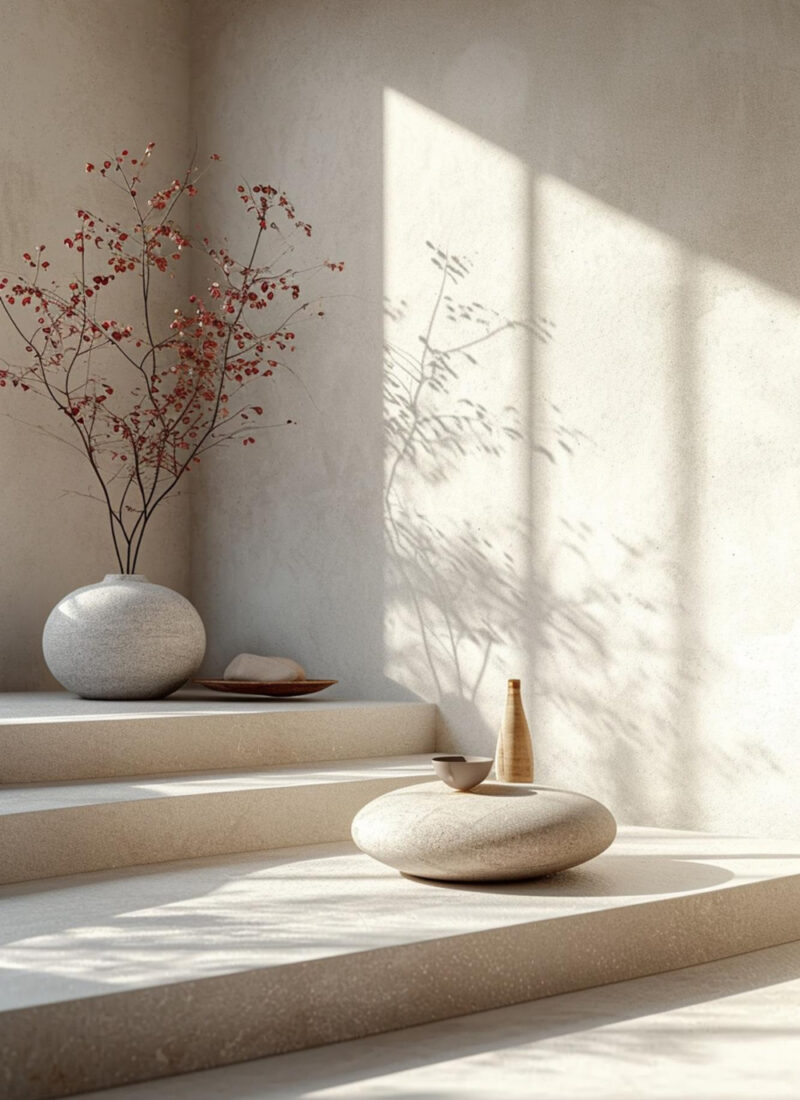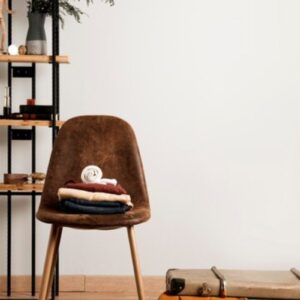Exotic would be an understatement when describing what Moroccan interior design is all about. Moroccan interior is luxurious, elegant, and dramatic. Vibrant hues and eye-catching fabric design are elements of this kind of design aesthetics. It’s no wonder why idea of this design architectural style has always been on the radar of many designers.
Photo by Aleksandra Rupar on Unsplash
This article unthreads the tapestry that is Moroccan style. You will see more ideas about Moroccan interior design and I am sure you are gonna love it!
You will understand how to pull off such a style in modern homes by learning the elements that make it up. Additionally, as interior designer I will provide you my designing tips so you can style better using the Moroccan design aesthetics.
What Is Moroccan Interior Design
Traditional moroccan style interior elements come from different influences including the Moors, North African, and Spanish, among others. It takes root in the natural landscape of North Africa, Western Sahara, and Spain, being on the border that connects Europe to the African continent.
It can be used to decorate the entire room, or simply used as a highlight to a particular design. Design-wise, the Moroccan style decor falls into two categories. Either you use the Berber elements to decorate the space and texture or add Andalusian or Spanish-Moorish influences to design your room.
Photo by Toa Heftiba on Unsplash
The Berber interior design is the simpler influence between the two. Otherwise known as Beni Ouarain, Berber rugs use natural fibers and often have geometric designs. On the other hand, the Andalusian influence is a mix of Moorish and Spanish heritage. More lavish than Berber art, Andalusian looks also have connections with the Bohemian design movement. The former was extensively used in the 1960s as a nod to non-conformism during the day.
Recent Post: What Is Mediterranean Interior Design
All in all, the Moroccan style interior design is known for its bold design interpretations and exquisite design elements.
Elements of Moroccan Interior Design
Moroccan interior design has a lot of readily recognized features to play around with so it’s easier for you to procure such pieces and place them in your living space. From Moroccan architecture, to textures found in Moroccon, there is so much to explore! Here is the comprehensive list of Moroccan design elements you need to consider.
Stained Glass
Stained glass brings a playful display of colorful light beams into the room. People on Pinterest have been all praise for it!
Keyhole Arches
Very typical in Moroccan homes are horseshoe arches or sometimes called keyhole arches or Moorish arches. This is a lobed or pointed arch that’s influenced by Islamic architecture. This is often placed on top of a narrow doorway.
Color
Color plays a huge part in defining Moroccan sensibilities. Colors from the surrounding environment are its inspiration. That being said, you should target shades of the African sunset, the cobalt blues of the Mediterranean Sea, the brown hues of the earth and the shimmering gold hues of the Sahara desert.
Photo by Maria Orlova
The color palette plays around the warmer tones of the mentioned shades and are being contrasted by jewel hues. It’s common to see the shades of terracotta, sand, and white and complemented by emerald green and aquamarine aside from the ubiquitous cobalt blue.
White is also used extensively but as the backdrop so that the earthy and jewel tones can shine through. Silver and gold are also used as accessory colors.
Furniture
Photo by Maria Orlova
Furniture pieces are designed with sophistication and attention to detail in mind. Also, there is much emphasis on the color choices; these should reflect the usual colors used in Morocco interior design. Cabinets should be part of the design, preferably with sliding doors. Choose bookcases with lattice door designs.
Furniture pieces are often low-seated and close to the ground. Tables often have intricate carvings or ornate metal works. Inlaid design is also a common feature of Moroccan furniture. Motifs for Moroccan furniture include scrollwork, symmetrical triangles and circles, and stars, among others.
Fabrics
Fabrics used in Moroccan interior design tend to be luxurious and at the same time, rich in color. Throw and floor pillows should be abundant. To complete the Arabian nights look, make sure that you have draperies on your windows. Another thing, patterned fabrics provide depth to the design. It also adds to the visual value of the room. Moroccan patterns are inspired by the architecture. That being said, you pick prints with arches and lantern themes.
Photo by Sophia Kunkel on Unsplash
Tiles
Ceramic and mosaic tiles are often used to frame the windows and doors; these are also used to accentuate a kitchen countertop or smaller accent pieces like picture and mirror frames.
Zillij tiles, or Islamic art tiles, can be used in this design. Such tiles are mosaics and made up of smaller pieces to form large geometric patterns like the radiating star and diamond patterns. This is one of the major design elements of the Moroccan style interior design. Aside from flooring, you can find these designs on pools, bath areas and fountains
Accessories
Moroccan design accessories are influenced by Islamic and Asian art. Often suspended from the ceiling, these lamps are made of brass and copper. Mirrors are also staples of Moroccan interior design. Similar with lamps, mirrors are also made of metals and often with Islamic art theme. Another Moroccan accessory you can add to your design is the brightly colored pots used as decorative lamps or serving ornaments.
While tajine is a cooking ware, you can also use ones with bright covers as an accessory to your kitchen. Pick ones that have intricate woven designs.
Moroccan Interior Design Tips
Here are design tips to help you create a unique Moroccan style for your living space.
Choose the colors of the spices for your color inspiration. Have shades of cinnamon, pepper, and saffron as your base colors and cobalt blue to accentuate them.
Colors aren’t the only elements you can play around with. While it seems imperative that you have bold colors when designing Moroccan interior design, it’s actually not always the case. If you don’t want to ride on the strong color route, then, you need to focus on the furniture pieces with intricate designs, flooring with mosaic tiles, or fabrics with geometric designs.
Make sure that you use neutral backgrounds if you’re having strong and bold colors. White, beige, and sand hues are perfect shades that can highlight the colors of the Moroccan decor.
Photo by Victoria Art
Never forget to add Persian or Berber rugs to your design mix.
Your bedspreads should be as colorful and vibrant as your living room pillows.
For the authentic Moroccan feel, add room dividers made of wrought iron.
Use Moroccan rugs to substitute for terracotta tiles. If you do have the latter, layer it with the said rug so the Moroccan theme becomes more recognizable.
Choose rugs with abstract or geometric designs. The more intricate and ornate these are, the better they would suit the Moroccan-style room.
Add wooden shelves and bookcases to mimic curved doorways and arches that are traditional to the Moroccan design
Add a glass top to an ornately designed wooden table.
If you can change your flooring, choose tiles with geometric designs. These can also be applied to your walls and tabletops. For example, add Moroccan-inspired tiles around your fireplace. It could serve as the focal point of that living space. Additionally, you can add tiles to your kitchen countertop or at the entrance door of your home.
Be dramatic when designing your Moroccan bedroom. Add an overhead canopy bed and drape it with silk and other fine fabrics.
Recent Post: What Is the Urban Style Interior Design?
It’s also important that you use Moroccan lanterns to light the room. Vary the materials of these lanterns. For a real statement piece, hang a large one over your dining table. This would be a great conversation piece for your guests.
Add large mirrors with ornate wooden or wrought iron frames opposite where the natural light is. This will help illuminate the room.
Make the room more Moroccan by adding scents that would remind you of the spice markets in Marrakesh. Choose nutmeg, cinnamon, and citrus scents. These could easily transport you to that summer in Morocco.
Add carved wood chests to your living room. Look for ones with mother of pearl or bone inlay. Such designs are great contrasts to the already rich elements of this design aesthetics.
If you have reclining couches, drape them in thin fabric and accentuate colorful throw pillows of different sizes. Pair your side chairs and sofas with large ottomans to complete the look.
Your kitchen should be accentuated with dark wood but your backsplash should be made of ceramic tiles. These should provide the best contrast to the predominantly dark wood feature.
While tajine is a cooking ware, you can also use ones with bright covers as an accessory to your kitchen. Pick ones that have intricate woven designs.
Paint your living room walls white or in neutral colors. Accentuate this by adding colors to your upholstery, draperies, or carpets. Your cushions should be in bright colors. Place a carpet on top of the tiled floors. Ornate tapestry or mirrors can balance the look. These can also become focal points of your living room. Place wood carvings in the corners of the rooms to add more depth.
For your dining room, bold colors work well so choose deep reds, dark blues, forest greens and oranges. Choose a rectangular table with tapered or carved legs. Include high-back chairs with carved elements and patterned upholstery.
To End: Moroccan Design
Moroccan interior design is a lavish style that exudes old-world charm. Do you think this kind of interior design is right up your alley? Share with us your thoughts in the comments section.




